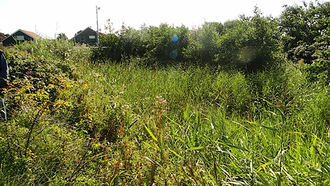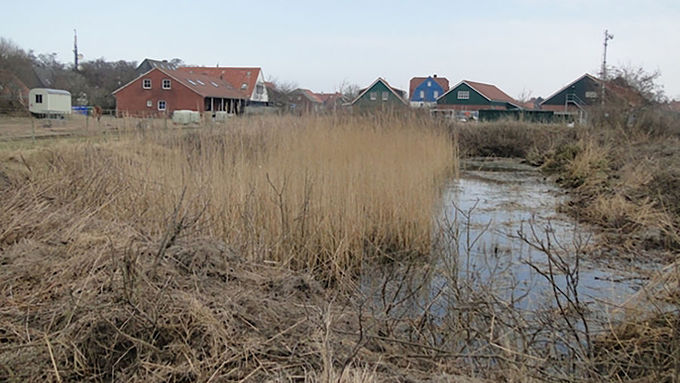The smaller waterbody in 2016 © Michael Steven, Ökologische NABU-Station Ostfriesland
download picturemain content
Project of the month
#5/2018 Spiekeroog
Restoration of habitat for the natterjack toad
The population of natterjack toads on Spiekeroog are among the last in East Frisia. However, according to a survey from 2015, by now even there only a few calling toads are living in different waterbodies. Former spawning waters of the toad had not been populated in recent years due to progressive succession and associated silting and growth of wood. In the context of the LIFE IP ‘Atlantic Region DE’, two local spawning waters situated outside the national park were rerestored via biotope management.
The first waterbody, sized approximately 400 square metres, had a layer of sludge before the start of the action and was largely overgrown with aquatic plants. At the southern side, alders and willows had come up and shaded the waterbody. The extensive shallow water zones of the second waterbody, sized approximately 1500 square metres, were almost completely shaded by wood. An island in the middle of the waterbody was wooded and a four to five metre wide depression around this island was filled in large part with mud.
The aim of the action was to optimize the habitat for the natterjack toad qualitatively. For this purpose, the woody plants at both waterbodies were removed to restore shallow water zones which are again exposed to the sun. Both waterbodies were also desludged.
Due to heavy rainfall, the water level at the beginning and during the implementation in February and March 2018 was much higher than expected, so that at the larger waterbody initially a lowering of the water level by pumping was necessary. Thanks to the support of the National Park Administration, this was made possible by pumping the water into the dyke foreland. Contrary to the original plans, most of the pruned woodcutting had to be used to provide access for the excavator. As a result, the pruning was unusable for the production fascines for coastal protection and had to be chopped instead.
After completion of the works, both waterbodies are fully exposed to the sun and desludged and offer the suitable spawning grounds for the natterjack toad. Depending on reshooting of the woody plants, repeated pruning will be necessary. At the larger waterbody, grazing with goats is intended; the smaller waterbody shall be included in a horse pasture. For this purpose, a fence about 30 metres long was built as part of this action





